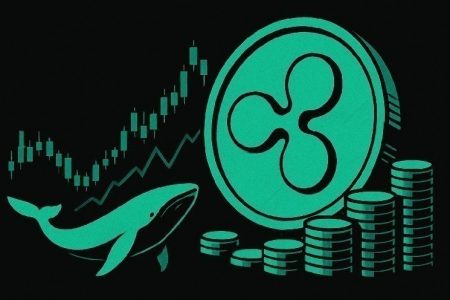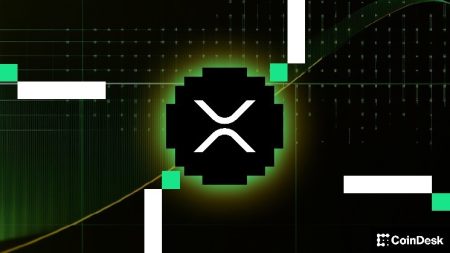Ethereum’s Future Divides Crypto Leaders: Tom Lee Predicts “Supercycle” While Critics Question Fundamentals
Wall Street Veteran Sees Ethereum as the Blockchain of Choice for Institutions and Government
In a bold projection that has sparked intense debate across the cryptocurrency community, BitMine Chairman and Fundstrat co-founder Tom Lee has described Ethereum as a “truly neutral chain” that will become the preferred blockchain platform for both financial institutions and government agencies. Lee’s assessment places Ethereum in a unique position to bridge the gap between traditional finance and the evolving digital asset landscape, potentially cementing its status as the foundation of future financial infrastructure.
“Ethereum represents a truly neutral chain that will appeal to both Wall Street and the White House,” Lee stated during a recent industry conference. His optimism extends beyond mere adoption, forecasting what he describes as an impending “supercycle” for cryptocurrencies that could last 10-15 years. Within this extended bull market, Lee envisions Bitcoin reaching between $200,000 and $250,000 by year-end, while Ethereum could surge to $10,000-$12,000 in the same timeframe. Looking further ahead, Lee suggested that Ethereum might eventually trade in the $12,000-$15,000 range, substantially surpassing its previous all-time high of approximately $4,800 set in November 2021. This prediction represents a potential 500-600% increase from current price levels, reflecting Lee’s confidence in Ethereum’s fundamental value proposition and growing institutional adoption.
Critical Response Challenges “Weakest Financial Arguments” Behind Bullish Ethereum Thesis
However, Lee’s optimistic outlook has faced significant pushback from industry insiders, most notably from Mechanism Capital co-founder Andrew Kang, who delivered a pointed critique of the Fundstrat co-founder’s analysis. Kang characterized Lee’s Ethereum thesis as “a combination of the weakest financial arguments,” suggesting that available market data contradicts several key assumptions underlying the bullish forecast. This disagreement highlights the ongoing debate about how to properly value blockchain networks and their native cryptocurrencies, especially as the technology continues to evolve and use cases expand beyond initial expectations.
Kang’s criticism centered on several specific points that challenge the narrative of Ethereum’s inevitable price appreciation. First, he disputed the revenue generation claims, noting that despite growth in stablecoins and real-world assets (RWAs) on the Ethereum network, these developments have not translated into significant revenue increases for the blockchain. Transaction fees, a key metric for network utilization and value capture, have remained relatively flat since 2020, according to Kang’s analysis. Meanwhile, user activity has increasingly migrated to alternative networks such as Solana and Arbitrum, potentially diluting Ethereum’s market position as the dominant smart contract platform. This shift in activity patterns raises questions about whether Ethereum can maintain its competitive edge in an increasingly crowded blockchain ecosystem where users prioritize speed and cost efficiency.
Disputed Analogies and Institutional Adoption Claims Under Scrutiny
The “digital oil” analogy frequently used to describe Ethereum’s role in the blockchain ecosystem came under particular scrutiny from Kang. While proponents of this comparison suggest that Ethereum, like oil, represents a fundamental commodity that powers digital applications, Kang pointed out that oil prices typically remain within a stable range over long periods. This price stability pattern, if applied to Ethereum, would actually contradict the bullish case for dramatic price appreciation. “If ETH is digital oil, then its price should remain relatively stable over time, not increase exponentially,” Kang argued, highlighting what he sees as an inconsistency in the bullish narrative.
Regarding institutional adoption, another pillar of Lee’s bullish thesis, Kang maintained that concrete evidence remains elusive. Despite years of speculation about major financial institutions adding Ethereum to their balance sheets, Kang noted that no major banks currently hold significant ETH positions, nor have they announced plans to do so in the near future. This absence of institutional commitment contrasts sharply with Bitcoin, which has seen increasing adoption from corporations and investment funds as a treasury asset or inflation hedge. Kang also dismissed comparisons between Ethereum’s potential value and the total market capitalization of financial infrastructure companies as “completely imaginary,” suggesting that such valuation models lack rigorous financial analysis and rely instead on speculative analogies that don’t account for fundamental differences between traditional companies and decentralized networks.
Technical Analysis Suggests Extended Consolidation Rather Than Immediate Breakout
From a technical analysis perspective, Kang offered a more conservative outlook for Ethereum’s price trajectory. He observed that Ethereum has been trading within a horizontal range for an extended period, suggesting that this pattern could persist for the foreseeable future. Rather than experiencing the dramatic surge predicted by Lee, Kang indicated that Ethereum might continue to trade within the $1,000-$4,800 range for a considerable time. This price consolidation theory aligns with historical patterns in cryptocurrency markets, where assets often experience prolonged sideways movement before significant breakouts in either direction.
The contrasting viewpoints between Lee and Kang reflect broader disagreements within the cryptocurrency industry about valuation methodologies, adoption timelines, and the competitive landscape for blockchain networks. While Lee focuses on Ethereum’s potential as institutional infrastructure and its position as the most established smart contract platform, Kang emphasizes current revenue metrics, competitive pressures from alternative blockchains, and the lack of concrete institutional adoption evidence. These different analytical frameworks lead to dramatically different conclusions about Ethereum’s medium-term price potential, illustrating the challenges investors face when evaluating assets in this rapidly evolving technological and financial landscape. As the cryptocurrency market continues to mature, these competing narratives will likely be tested against real-world developments in adoption, regulatory clarity, and technological advancement.
This article is intended for informational purposes only and does not constitute investment advice. Cryptocurrency investments involve significant risk, and investors should conduct thorough research before making financial decisions.













